Filtered by: Scitech
SciTech
Massive balangay 'mother boat' unearthed in Butuan
By TJ DIMACALI, GMA News

The largest sailing vessel of its kind yet discovered is being unearthed in Butuan City in Mindanao, and it promises to rewrite Philippine maritime history as we know it.
Estimated to be around 800 years old, the plank vessel may be centuries older than the ships used by European explorers in the 16th century when they first came upon the archipelago later named after a Spanish king, Las Islas Felipenas.
The find also underscores theories that the Philippines, and Butuan in particular, was a major center for cultural, religious, and commercial relations in Southeast Asia.
The find also underscores theories that the Philippines, and Butuan in particular, was a major center for cultural, religious, and commercial relations in Southeast Asia.
'Nails' the size of soda cans
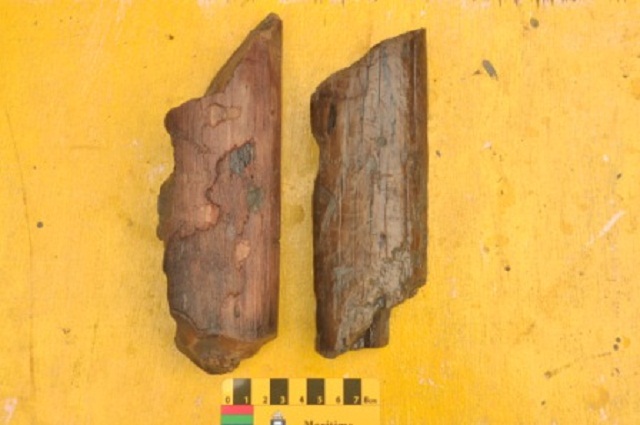 National Museum archeologist Dr. Mary Jane Louise A. Bolunia, who leads the research team at the site, says almost everything about the newly-discovered "balangay" is massive.
National Museum archeologist Dr. Mary Jane Louise A. Bolunia, who leads the research team at the site, says almost everything about the newly-discovered "balangay" is massive.She holds up her hand and curls her fingers into a circle, as if grasping a soda can. "That's just one of the treenails used in its construction," Bolunia says.
An aptly descriptive term, a "treenail" is a wooden peg or dowel used in place of iron nails in boatbuilding.
So with "nails" that size, exactly how big is this boat?
Bolunia produces a piece of onionskin paper with a carefully-inked map of the archeological site. On the upper corner is a roughly pea pod-shaped boat wreck, about 15 meters long, one of eight similarly-sized balangays discovered at the site since the 1970's.
But right next to it, discovered only in 2012, are what seem to be the remains of a ninth balangay so wide that it could easily fit the smaller craft into itself twice over – and that's just the part that's been excavated so far.
Although the boat has yet to be fully excavated, it's estimated to be at least 25 meters long.
Aside from the treenails, the individual planks alone are each as broad as a man's chest – roughly twice the width of those used in other balangays on the site. The planks are so large that they can no longer be duplicated, because there are no more trees today big enough to make boards that size, according to Bolunia.
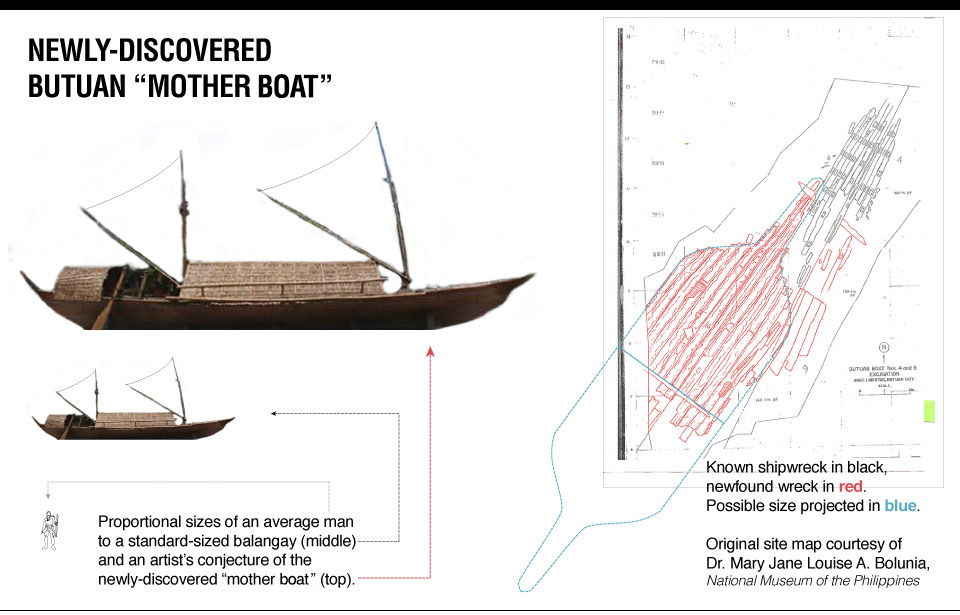
Visiting the site
GMA News visited the site on August 14, and found the excavation site waterlogged pending further digging and study. However, Bolunia assured that keeping the artifacts in this condition for now is actually beneficial for their conservation.
"We just let the water seep in and leave it at that because it's more protected than if you dry it. If you expose it without proper conservation then it will disintegrate," she told GMA News.
Jorge Absite, officer-in-charge of the Butuan Museum, is hopeful that the new discovery will yield more insights about our Filipino ancestors.
The Butuan Museum is tasked with supervising the care and protection of the balangay excavations and any artifacts found therein.
"Ito ang kasagutan sa 'missing link' ng kultura natin, kung ano ba talaga ang uri ng pamumuhay meron ang mga ninuno natin (This is the answer to a 'missing link' in our culture, on what kind of life our ancestors really had)," Absite said.
"(Filipinos') ability to construct or build big boats is not something new... Even before the Chinese came to the Philippines, the Filipinos went to China through the Butuanons," Bolunia underscored.
Proceeding with caution
Historians, and Bolunia herself, caution that much work still needs to be done before the boat can be conclusively dated and identified.
"(The newly-discovered boat) will need more technical verification to establish its connection and relationship with the other boats already excavated, so that we can know its date, boat typology, and technology," said Dr. Maria Bernadette L. Abrera, professor and chairperson of the Department of History at the University of the Philippines-Diliman, in an email interview.
"(The newly-discovered boat) will need more technical verification to establish its connection and relationship with the other boats already excavated, so that we can know its date, boat typology, and technology," said Dr. Maria Bernadette L. Abrera, professor and chairperson of the Department of History at the University of the Philippines-Diliman, in an email interview.
"We have to be careful," said Ramon Villegas, a scholar who has done extensive research on pre-colonial Philippine history. "There has not been enough time to study (the artifacts). It could be a Spanish boat or Chinese junk."
Aside from carbon dating to determine the age of the wood, the construction techniques used and even the type of wood itself need to be ascertained before anyone can come to a definitive conclusion.
"Everything depends on the construction, on how the boat was built, before you can properly call it a 'balangay'," explains archeologist and anthropologist Dr. Jesus Peralta. He said he has yet to see the newfound boat for himself.
Nevertheless, the boat's proximity to previous sites of buried balangays promises to send ripples through the academic world.
"It's a 'mother boat'," Bolunia says with little hesitation, "and it's changing the way we think about ancient Filipino seafarers."
Rewriting Philippine history
It has long been established that Filipinos traveled across Southeast Asia as early as the 10th century, reaching as far as Champa – what is now the eastern coast of Vietnam – in groups of balangays.
These groups or flotillas have always been thought to consist of similarly-sized small vessels, an idea perpetuated by the term "barangay" – the smallest administrative division of the present-day Philippine government.
But, according to Bolunia, this new discovery suggests that these may just have been support vessels for a much larger main boat, where trade goods and other supplies were likely to have been held for safekeeping.
The discovery also suggests that seafaring Filipinos were much more organized and centralized than previously thought.
"This balangay reinforces the findings of the earlier excavations about the role of Butuan as a commercial and population center in precolonial Philippines," Abrera told GMA News.
"Butuan seaport had long-time trade links with Champa and Guandong (China). You can retrace the importance of (the newly-discovered boat) by utilizing it as an archeological key to that period when Butuan was a busy link to the pan-Asian cultural and commercial intercourse," historian Arnold M. Azurin told GMA News via Facebook chat.
In fact, Filipino seafarers from Butuan were already exploring Asia over a thousand years ago, well ahead of our Chinese neighbors: as early as 1001, the Song Dynasty recorded the arrival of a diplomatic mission from the "Kingdom of Butuan."
"In 1003 AD, a Butuan chieftain petitioned the Chinese Imperial Court to allow it to bring its products direct to Guandong—instead of using Champa as the entrepôt (main trading post)," Azurin added.
However, according to Azurin, the petition was declined because the Court insisted on regulating trade via Champa.
He also says that Butuan may also have played a major role in the spread of culture and religion in the Philippines long before Christianity and even Islam came to the islands.
"The boat's possible deeper significance is that it may be one of the carriers of Hindu-Buddhist cultural influence in the Philippine Archipelago long before Islam and Christianity arrived here. Many scholars also say that the baybayin script arrived here through the same connection with Champa. Hence, you can deepen the cultural legacy of our ancestors," Azurin said.
Butuan as a major center of culture and trade
"This balangay reinforces the findings of the earlier excavations about the role of Butuan as a commercial and population center in precolonial Philippines," Abrera told GMA News.
"Butuan seaport had long-time trade links with Champa and Guandong (China). You can retrace the importance of (the newly-discovered boat) by utilizing it as an archeological key to that period when Butuan was a busy link to the pan-Asian cultural and commercial intercourse," historian Arnold M. Azurin told GMA News via Facebook chat.
In fact, Filipino seafarers from Butuan were already exploring Asia over a thousand years ago, well ahead of our Chinese neighbors: as early as 1001, the Song Dynasty recorded the arrival of a diplomatic mission from the "Kingdom of Butuan."
"In 1003 AD, a Butuan chieftain petitioned the Chinese Imperial Court to allow it to bring its products direct to Guandong—instead of using Champa as the entrepôt (main trading post)," Azurin added.
However, according to Azurin, the petition was declined because the Court insisted on regulating trade via Champa.
He also says that Butuan may also have played a major role in the spread of culture and religion in the Philippines long before Christianity and even Islam came to the islands.
"The boat's possible deeper significance is that it may be one of the carriers of Hindu-Buddhist cultural influence in the Philippine Archipelago long before Islam and Christianity arrived here. Many scholars also say that the baybayin script arrived here through the same connection with Champa. Hence, you can deepen the cultural legacy of our ancestors," Azurin said.
Older than Magellan and Jung He
While the newfound boat has yet to be accurately dated, its construction and position directly alongside a balangay from the 1200's strongly suggest that it is also a balangay from the same time period.
If so, then the boat predates by hundreds of years Magellan's arrival, and death, in the Philippines in 1521 and even the Chinese explorer Zheng He's expedition across Asia in 1400.
"For more than a thousand years, the trade and settlement patterns and routes across Asia connected certain islands (of the Philippines), especially those with good harbors and steady supply of local products," Azurin said.
"Highly interesting is the mention of slaves-for-sale in (Magellan's chronicler) Pigafetta's account of the first circumnaviation: Raja Humabon boasted to Magellan that some boatloads of slaves had just left Cebu for Cambodia and Champa—likely in need of warm bodies for their wars of succession, or for new stonecutters for their megalithic shrines," he added.
Could Filipino craftsmen, sent abroad on balangays, have helped build ancient Asian monuments like Angkor Wat?
"That's a possible conjecture, considering that archeologists like Robert Fox, H. Otley Beyer and others have pointed out that some islands in southern Philippines had communities linked to (these places)," he said.
"Highly interesting is the mention of slaves-for-sale in (Magellan's chronicler) Pigafetta's account of the first circumnaviation: Raja Humabon boasted to Magellan that some boatloads of slaves had just left Cebu for Cambodia and Champa—likely in need of warm bodies for their wars of succession, or for new stonecutters for their megalithic shrines," he added.
Could Filipino craftsmen, sent abroad on balangays, have helped build ancient Asian monuments like Angkor Wat?
"That's a possible conjecture, considering that archeologists like Robert Fox, H. Otley Beyer and others have pointed out that some islands in southern Philippines had communities linked to (these places)," he said.
Continuing a seaworthy tradition
In any case, the "mother boat" and the smaller balangays in Butuan were definitely made for exploring the high seas, according to Dr. Bolunia.
She says their overall shape and construction are suited to navigating deep ocean waters more than shallow rivers. The presence of a quarter rudder and sails would also indicate a sea-going vessel, although these have yet to be found, Dr. Bolunia says.
"That's especially true for a boat this size," she says of the giant balangay.
Even today, the Sama-Badjao of Sulu still practice boatbuilding techniques that are strikingly similar to those used in constructing the Butuan boats.
In 2010, replica balangays built by Sama-Badjao craftsmen and manned by Filipino adventurers completed a 14,000-km journey across Southeast Asia, proving the seaworthiness of the original balangays and the traditional woodcraft used to construct them.
One of the boats, the 15-meter-long "Diwata ng Lahi," is now on permanent display outside the National Museum in Manila.
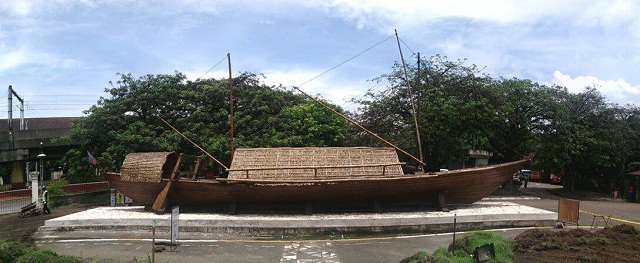

Textual evidence of large boats
Villegas believes it was only a matter of time before a boat of this size was found, pointing out the historical accounts about similarly grand Filipino vessels.
For example, Pigafetta also documented the existence of a boat fit for a king: "We saw come two long boats, which they call Ballanghai, full of men. In the largest of them was their king sitting under an awning of mats," he wrote.
Native boats "intended for cargo capacity or seagoing raids" could be "as long as 25 meters," said noted historian Dr. William Henry Scott in his book, "Barangay: Sixteenth-Century Philippine Culture and Society".
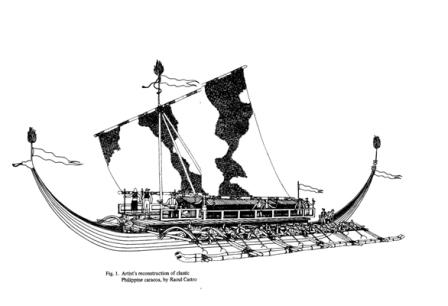 Scott also hinted at the existence of even more impressive vessels: "The most celebrated Visayan vessel was the warship called karakoa, (which) could mount forty (meter-long oars) on a side."
Scott also hinted at the existence of even more impressive vessels: "The most celebrated Visayan vessel was the warship called karakoa, (which) could mount forty (meter-long oars) on a side." "The care and technique with which (Filipinos) build them makes their ships sail like birds, while ours are like lead in comparison," Scott quoted a Spanish priest as having written in 1667.
However, no large Filipino vessels have been discovered and excavated – until now, if the Butuan "mother boat" is indeed of ancient origins.
"Historians have always known there were other (large) boats. We should expect to find big boats because (we know) they existed," Villegas said.
"It's just that the National Museum only now has the funds to do the excavations. There's a lot to be found even just in Butuan," he added.
Lingering mysteries of Butuan
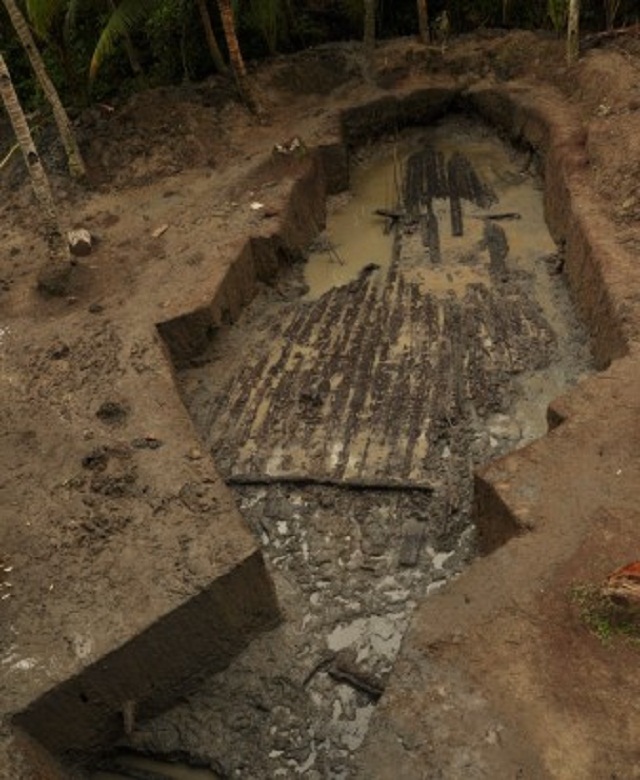 Dr. Bolunia and her team plan to return to Butuan in September to complete the excavation, and hopefully to date the massive new find.
Dr. Bolunia and her team plan to return to Butuan in September to complete the excavation, and hopefully to date the massive new find. They also plan to take a core sample from the ground in the hopes of answering one of the biggest mysteries surrounding the Butuan balangays.
Dr. Bolunia explains that the archeological site, although now inland, was once an alcove that opened out to the sea. She says that all the balangays were found "drydocked" on what was once the Butuan seashore.
That the vessels were so well preserved is largely because they were buried intact, and the submergence of the area over succeeding centuries kept the wood from decaying.
But exactly how did the Butuan balangays get buried there in the first place?
Dr. Bolunia says there are two competing theories: either the boats were intentionally buried, or they were left behind after a sudden cataclysm – such as a landslide from an earthquake.
If the boats were purposely abandoned, why did the builders take the trouble of burying them? But, on the other hand, where is the evidence of any natural calamity that might have befallen the boats and their builders?
These are among the many remaining questions that face probers of the Philippines' ancient past. If Dr. Bolunia's hunches are correct about the latest find in Butuan, the mother boat could be the key to unlocking answers about how our Filipino ancestors lived, explored, and fought. — with Howie Severino/ELR, GMA News

Need a wellness break? Sign up for The Boost!
Stay up-to-date with the latest health and wellness reads.
Please enter a valid email address
Your email is safe with us
More Videos
Most Popular





